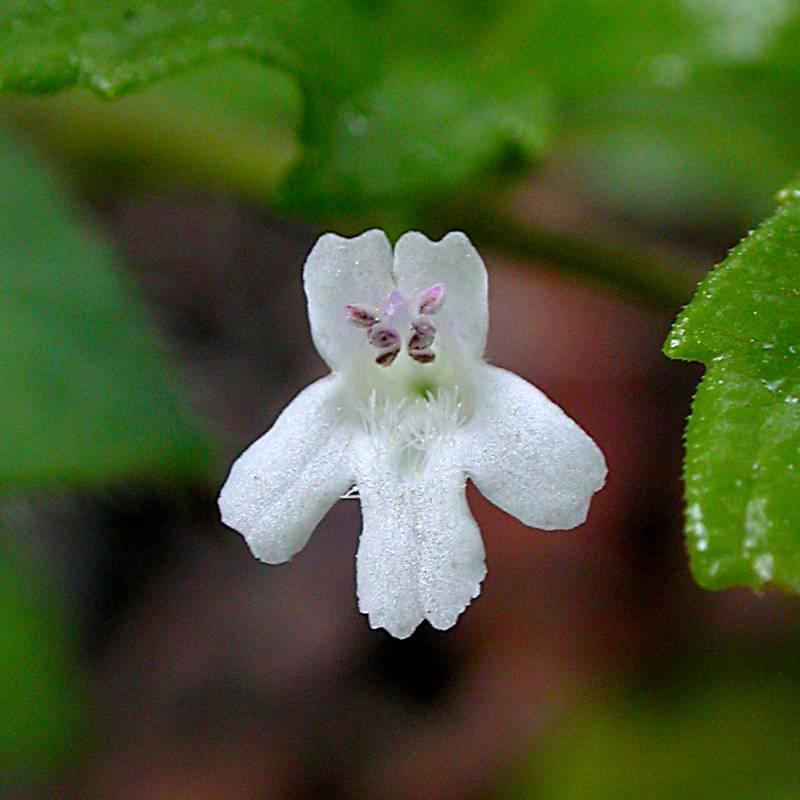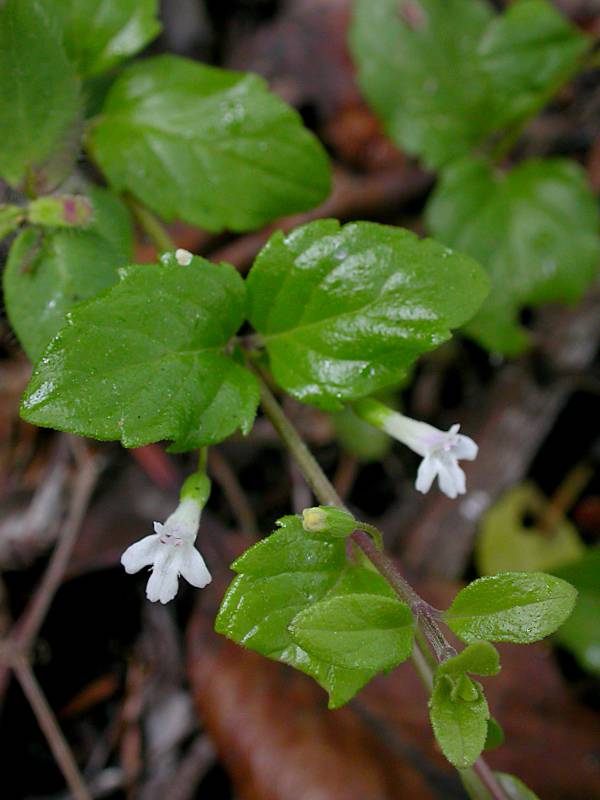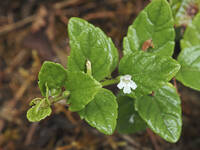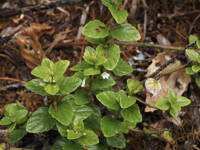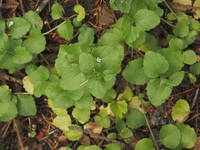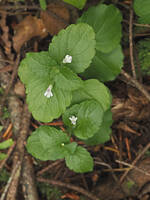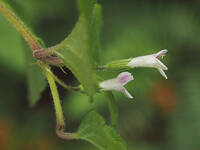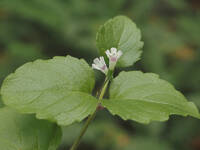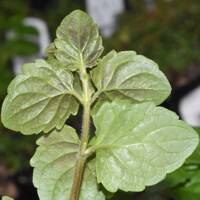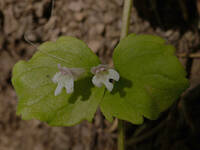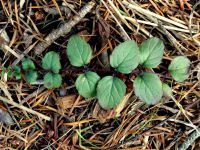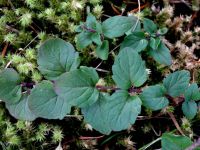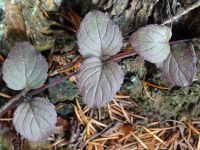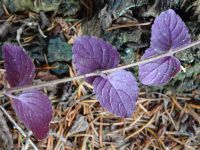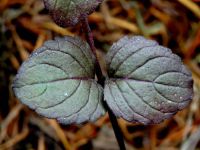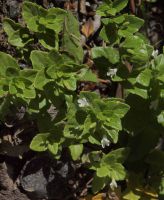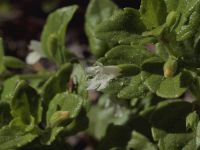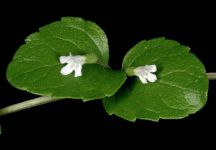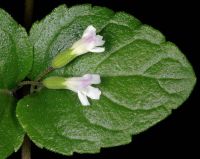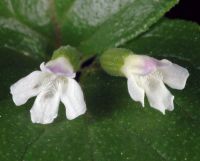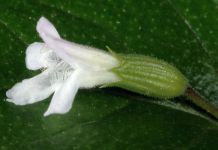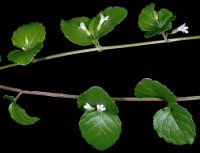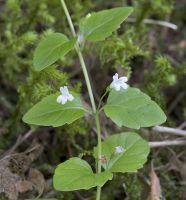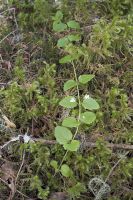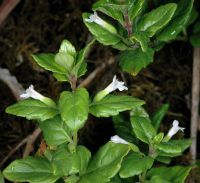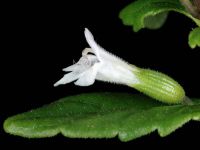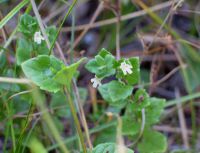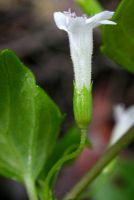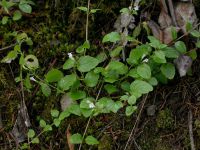Distribution: Occurring chiefly west of the Cascades crest in Washington; Alaska to California, east to Montana.
Habitat: Coniferous woods, from sea level to middle elevations in the mountains.
Flowers: May-July
Origin: Native
Growth Duration: Perennial
Conservation Status: Not of concern
Pollination: Bumblebees, bees, hummingbirds
Perennial herbs from woody rhizomes, the stems prostrate, up to 1 m. long, often rooting, often with short, ascending branches.
Leaves opposite, short-petiolate or nearly sessile, the blade ovate to sub-rotund, 1-3.5 cm. long, usually with a few blunt teeth.
Flowers solitary in the axils on slender pedicels 5-15 mm. long; calyx about 5 mm. long with prominent ribs and 5 short, acute teeth; corolla two-lipped, the lips short, white or purplish-tinged, 7-10 mm. long; stamens 4, nearly equal, ascending under the upper lip; style 2-parted; ovary 2-celled, superior.
Nutlets 4
Publication: Revisio Generum Plantarum 2: 515. 1891.
Satureja chamissonis (Benth.) Briq.
Satureja douglasii (Benth.) Briq. [HC]
PNW Herbaria: Specimen records of Clinopodium douglasii in the Consortium of Pacific Northwest Herbaria database
WA Flora Checklist: Clinopodium douglasii checklist entry
OregonFlora: Clinopodium douglasii information
E-Flora BC: Clinopodium douglasii atlas page
CalPhotos: Clinopodium douglasii photos

